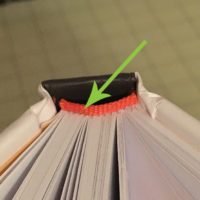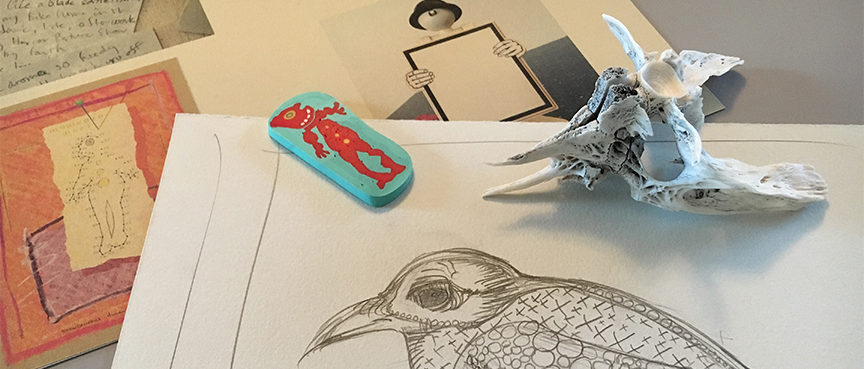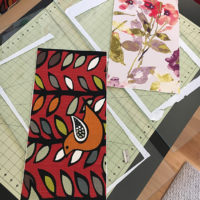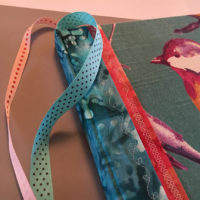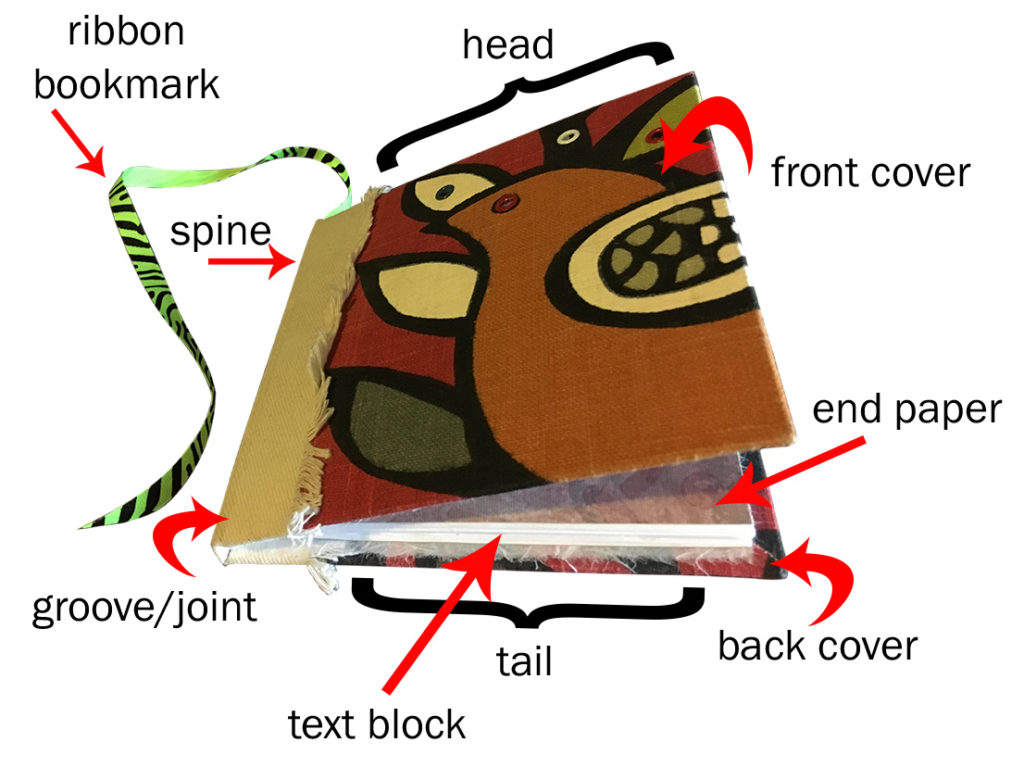
Parts of a Book
Folio – if a single sheet of paper is folded in half it is known as a folio. If this is folded again it is called a quarto.
Signature – a signature is made up of a group of folios, generally three or four, which results in 12 or 16 pages, respectively. Commercial books generally use signatures of four folios.
Text Block – the text block is made up of groups of signatures sewn together to create the block of pages that make up the book.
Case – traditional books, as well as many variations of handmade books, are made with a hardboard cover and spine. The boards are often covered with decorative fabric or paper.
Front Cover/Back Cover – the covers enclose the contents, or text block, of the book. There are many ways to create and cover the covers of handmade books.
Spine – in a traditional book the spine is made from hardboard similar to the covers and is covered with the same material. It is the backbone of the book. Some book variations do not have a spine in the traditional sense and are sewn together in ways that allow the book to lie flat when opened. Coptic binding is an example of a technique that does not have a traditional spine and lies flat when opened.
Backing Material/Mull – in a traditional cased-in book this is applied to the inner spine of the book to hold the text block together and to add strength to the block of signatures. This also helps secure the text block to the cover.
Endpapers – these are folded sheets of paper that are glued to the first sheet of the text block and the inside of the front cover, and to the last sheet of the text block and the inside of the back cover, to join the text block to the cover. Endpapers are often decorative sheets that enhance the theme or style of the book.
Headband/Tailband – these are not essential and are generally added to the head and tail of the spine as a decorative feature.
